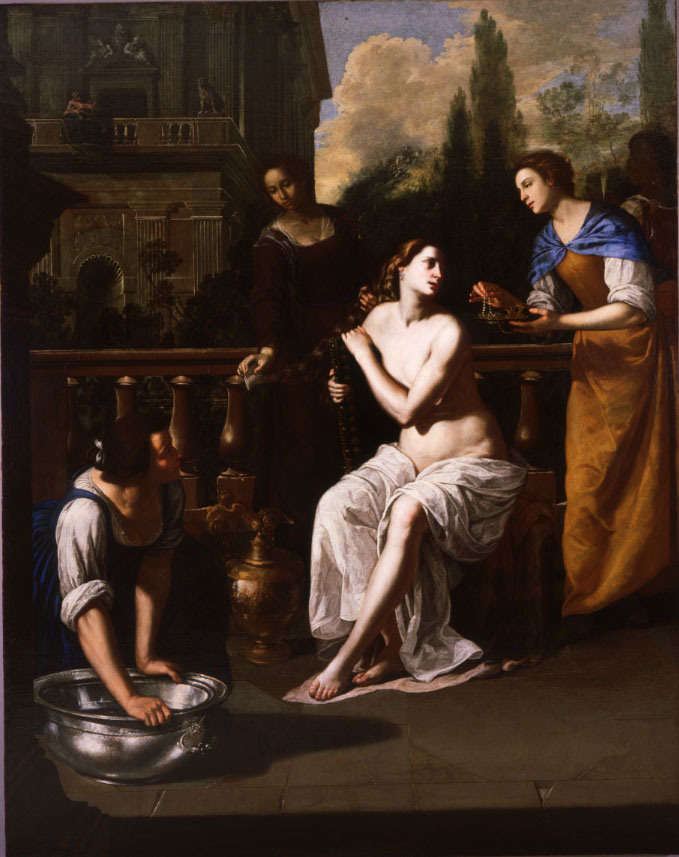By: Amy Fredrickson
A receipt dated 5 May 1636 shows Artemisia Gentileschi received 250 ducats from Lorenzo Cambi and Simone Verzone, who acted on behalf of Prince Karl Eusebius von Liechtenstein, for a commission of three canvases depicting Bathsheba, Susanna, and Lucretia. This payment of 250 ducats was the last payment owed to Artemisia and she was to immediately send the works.
The attribution has been questioned. Some scholars proposed that the aforementioned picture is part of the Columbus Museum of Arts’s collection; however, others challenged the provenance due to the differences in measurements. The narrative of David and Bathsheba was a common theme in Artemisia’s oeuvre, as she may have depicted the subject at least seven times.
The scene depicts King David out for a stroll as he was unable to sleep. From his palace balcony he observes Bathsheba at her toilet. She was married to Uriah, a Hittite soldier, who was away at war. David was immediately attracted to her beauty and sent messengers to summon her to his palace. Upon their meeting, David seduced Bathsheba, and she conceived his child. David planned to deceive Uriah into believing that the child was his; however, David was unsuccessful in calling Uriah home. After several failed attempts to bring him back the King ordered Uriah to battle. Uriah was put on the front line and was subsequently killed. After a period of mourning Bathsheba married David.
Artemisia depicts the moment when David first noticed Bathsheba at her bath. The King leans against the railing of his palace balcony and is visible in the upper left corner of the canvas. Bathsheba, surrounded by three maidservants, is unaware to his gaze. In this work she is turned towards the maidservant holding out a tray of jewelry. On other canvases Artemisia often depicts Bathsheba gazing in a mirror, emphasizing her vanity. In this case, its absence provides the viewer with the opportunity to connect with Bathsheba’s vulnerability.
References:
Bissell, R. Ward, Artemisia and the Authority of Art: Critical Reading and Catalogue Raisonné, (University Park, 1999).
Christiansen, K. and Judith W. Mann, eds. Orazio and Artemisia Gentileschi, Exh. Cat., The Metropolitan Museum of Art, (New York, 2001).
Locker, Jesse, Artemisia Gentileschi: The Language of Painting, (New Haven, 2015).
Image:
Bathsheba, Oil on Canvas, 2.65 x 2.10, The Columbus Museum of Art, Columbus, Ohio

